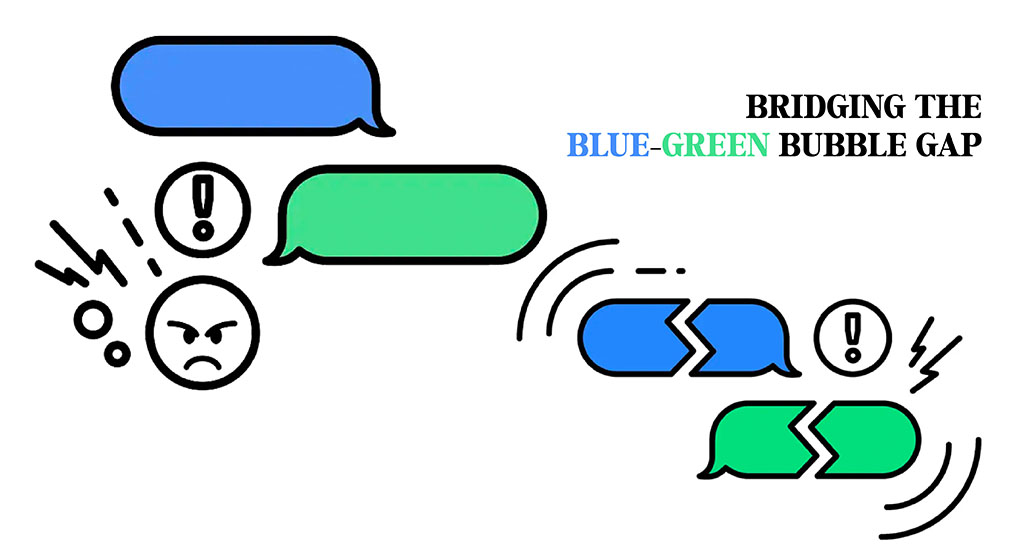Smartphone users have been dealing with the “green versus blue bubble” situation when messaging for over a decade. This refers to the color of message bubbles, showing if someone is using an iPhone or an Android. This has become a symbol for social status and wealth, creating a deeper sociological divide. Apple recently announced that they are making text messaging better for those with Androids, which is a move to bring iPhone and Android users closer. However, the bigger problem of feeling better than others because of the kind of phone you have still exists.
The technology giant plans to enhance the quality of images and videos sent between iPhones and Androids. In that, they are preserving the familiar green bubble for text messages. Even though this helps with some technical issues, it doesn’t fix the cultural problem of people caring too much about the color of the bubbles.
The difference between blue and green bubbles is affecting different parts of our social lives, from dating apps to school environments. People with green bubbles sometimes face rejection and teasing, which is a type of cyberbullying. This information comes from Jim Steyer, who is the CEO of Common Sense Media.
To fight against this idea of feeling superior based on the type of phone you have, people should try using messaging apps that work well on different phones. Instead of just using the usual messaging apps, try alternatives like WhatsApp and Signal. Third-party messaging apps like WhatsApp and Signal have long provided a solution, offering encryption, support for high-resolution media, and a range of fun features.
While it might be a challenge for less tech-savvy individuals, helping them set up these alternative apps can contribute to a more inclusive digital environment. Additionally, platforms like Discord, Snapchat, and Instagram offer messaging capabilities that work consistently between different types of phones.
The issue extends beyond technological preferences to societal stereotypes about wealth and status associated with phone choices. A popular meme on social media illustrates the bias against Android users, perpetuating the misconception that green bubbles equate to lower social standing. It’s crucial to debunk such stereotypes, considering factors like affordability, personal preferences, and the diverse range of Android devices available.
As key influencers, adults must set an example by dropping elitist attitudes and embracing diversity in smartphone choices. Complaints about green bubbles during social gatherings can contribute to a negative narrative, influencing children to follow suit. The responsibility lies not only with individuals but also with tech executives. Apple and Google, in their competition for user loyalty, should prioritize fostering an inclusive tech culture over fueling the bubble war.
In conclusion, while Apple’s technological improvements represent a positive step, the real challenge lies in dismantling the cultural barriers associated with smartphone communication. Embracing alternative messaging apps, challenging stereotypes, and promoting inclusivity will contribute to a more harmonious digital landscape where the color of a message bubble does not define a person’s worth.



Discussion about this post